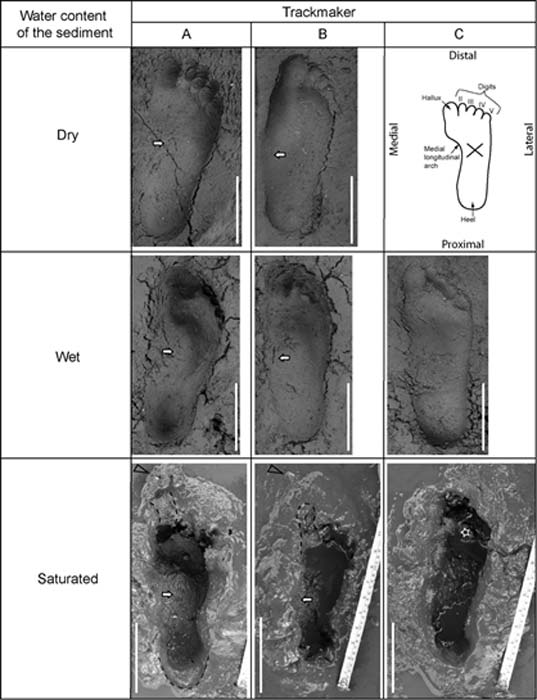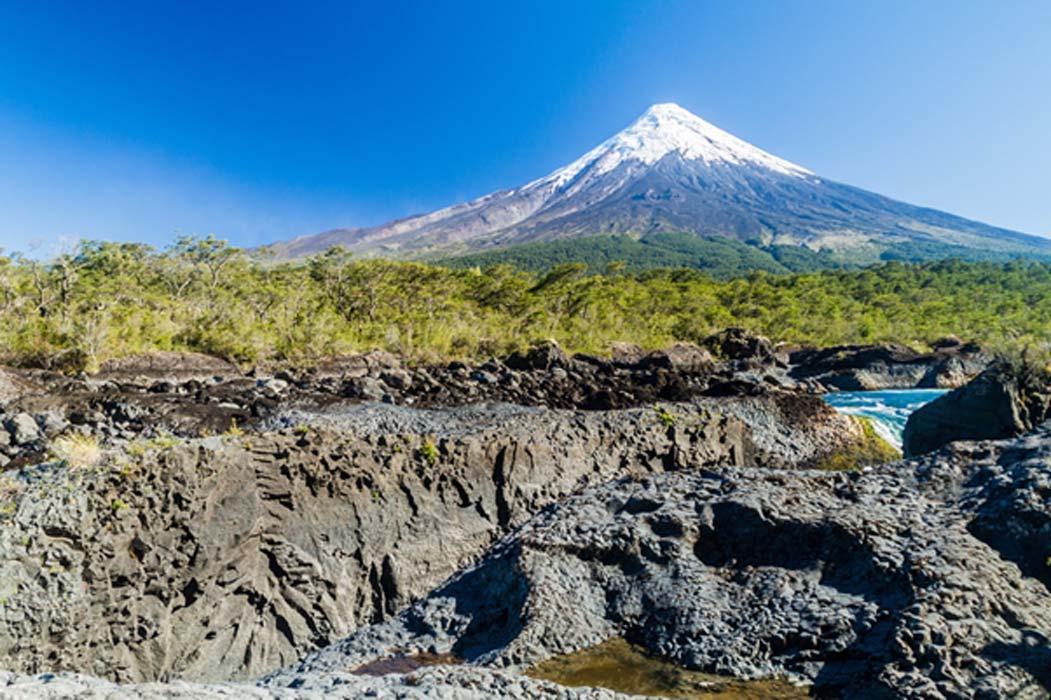Discovery of 16,000-year-old Footprint That Could Change the History of the Americas
There are some discoveries that can change the way that we think about history. Archaeologists in Chile believe that they have made one such discovery. They have uncovered a human footprint that is approximately 15,500-16,000 years old. It is the earliest evidence yet found of humans in the Americas. The imprint has the potential to change how we believe the continent was settled and who were its first inhabitants.
The imprint was found at the late Pleistocene period archaeological site of Pilauco, which according to phys.org “where scientists have been digging since 2007.” The Pilauco site had also yielded evidence of extinct elephants and horses and is located in the Chilean city of Osorno some 500 miles (800 kilometers) south of Santiago, the capital of Chile.

The Pleistocene footprint is the oldest surviving human footprint in the Americas. (Universidad Austral de Chile)
A Pleistocene Footprint
The footprint was found in 2010, near a modern house, by “a student at the Universidad Austral of Chile” according to Reuters. While the impression may appear to be clearly a human footprint, the scientists were cautious, as it could have been an animal’s tracks which had become misshapen and elongated over-time. It is believed that the imprint was buried under three feet of residue, which preserved it for posterity.
The Irish state broadcaster RTE reports that ‘”it took years for paleontologist Karen Moreno and geologist Mario Pino to reliably confirm that the print was human.” It was only established by carrying out footprint tests with people and this proved that the imprint was human. These also established that it was made by a “barefooted adult human who was of 'light body weight’” according to the Daily Mail.

Based on foot printing tests they conducted, scientists think the print comes from a straight down step. The diagram shows the different type of prints that could be made with different angles and pressure. (Universidad Austral de Chile)
It is believed that the footprint is of a man who weighed 155 pounds (70 kilograms) and according to phys.org, was “of the species Hominipes modernus, a relative of Homo sapiens.” This was established by ichnologicaly, that is by the scientific examination of the traces found in the sediment. Ichnologists comparing the mark with other traces were able to establish that it was H. modernus.
- Pre-Columbian mummies in Chile show signs of arsenic poisoning
- Oldest human footprints yet discovered in North America found in British Columbia
- Sea-Farers from the Levant: Do Ancient Inscriptions Rewrite History of the Americas? - Part 2

To establish if the Pleistocene footprint was human and how it was made, scientists performed foot printing tests on soil at different soil moisture levels and with different foot angles and pressures. (Universidad Austral de Chile)
The Earliest Evidence of Humans
Scientists were able to date the find by using radiocarbon dating techniques that analyzed organic plant material near where the print was located and established that it was approximately 15,600 years old. This made it according to RTE, the “oldest footprint found in the Americas.” While other prints have been unearthed, none are as old as the one found in the city of Osorno. It seems that the site was occupied by humans for some time as footprints dated a thousand years later have also been uncovered.
The Daily Mail reports that “this was the first evidence of humans in the Americas older than 12,000 years.” Previously it had been believed that the first inhabitants of the continent arrived from Siberia via the Bearing Straits some 10,000 years ago. This discovery is challenging the idea that Clovis Man, a paleo-Indian culture was the first to settle the continent.

Archeologist working on site of the location were Pleistocene footprint was discovered. (NERYX / Adobe)
Who First Settled the Americas?
According to Plos One, the find provides evidence of “the colonization of northern Patagonia” in the late Pleistocene period. The footprint is supporting evidence found at the Monte Verde, Chile, that this region in the extreme south of the Americas was colonized much earlier than thought. This, in turn, is supporting the so-called coastal migration model. This holds that the first settlers to inhabit the Americas migrated by following coastlines and may suggest that Pacific Islanders were the first to settle on the continent.
The impression and its surrounding sediment has been removed from the Osorno site and is now stored in a specially regulated environment. It has cracked somewhat as the moisture in the soil has dried but the impression is still distinct. The print could be put on display at some later date, but this depends on the state of the traces.
Top image: Region close to where the Pleistocene footprint was discovered. Source: Matyas Rehak / Adobe
By Ed Whelan




















Comments
That keeps popping up although your alleged 'human and dino prints found together' scenario was debunked when I was an undergrad (I am now 64). Several of those kinds of claims we're studied and NONE were found to have any validity. They were either misidentified or you could still see the file marks on the so-called 'human' tracks. Funny how that happens when those claims are actually Investigated.
Horse manure! In the Palauxy River near Glen Rose, Texas, there are multiple human footprints among dinosaur footprints in the river bed. Either, the dinosaurs died sooner that the scientists say or the humans lived a few million years ago along with the dinos.
Archeology needs a reboot, theres been evidence for decades that that early humans existed in the new world. Problem is that no one goes deeper than 13400 years because, " we know nothing is there." Except a few mavericks who get ridiculed and laughed at.
I’m glad we’re moving away from the Bering Straits bridge theory which I never believed
The Meadowcroft Rockshelter in Southwestern Pennsylvania was discovered in the 1970s. It’s also dated to be 16,000 years old. This is hardly groundbreaking.